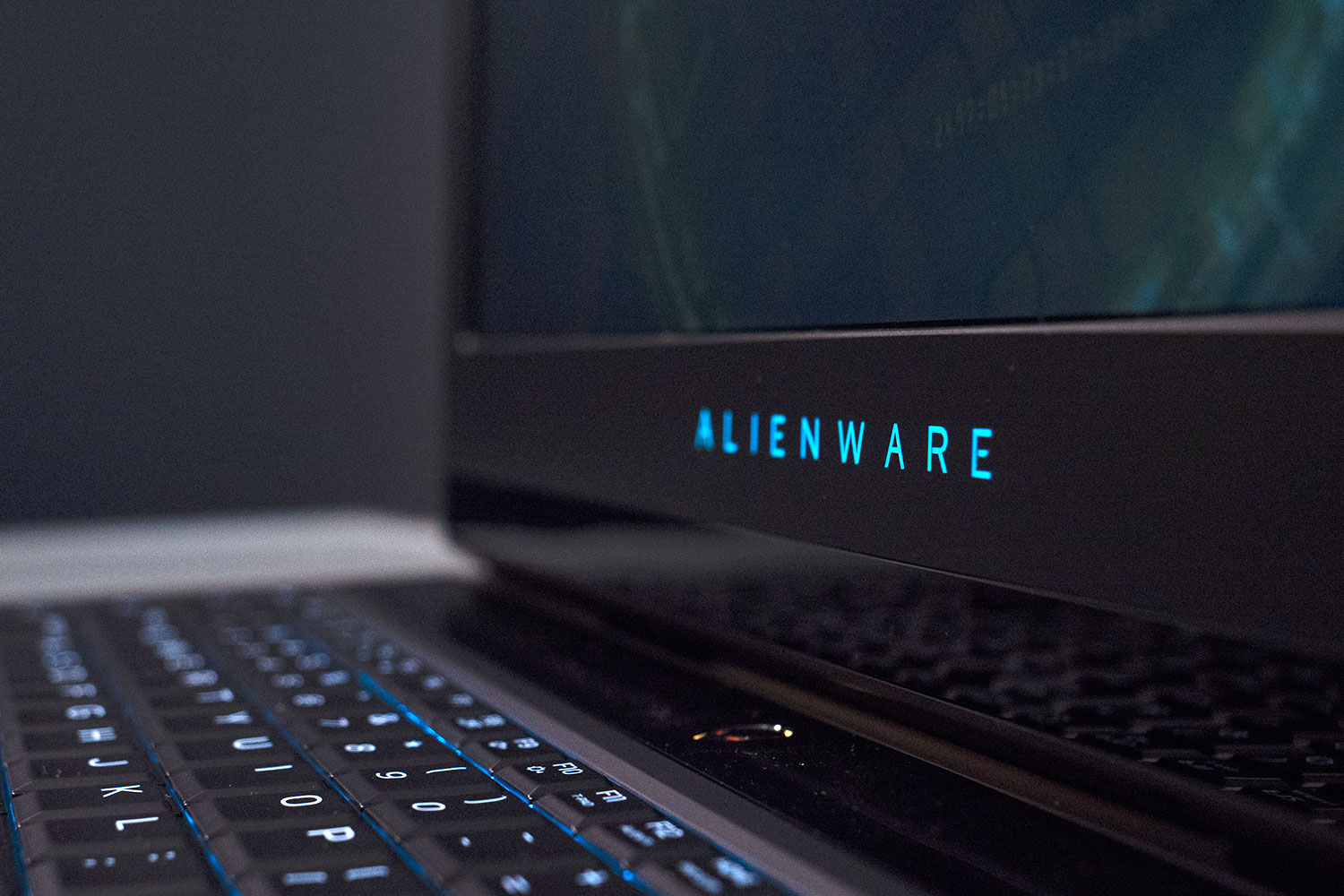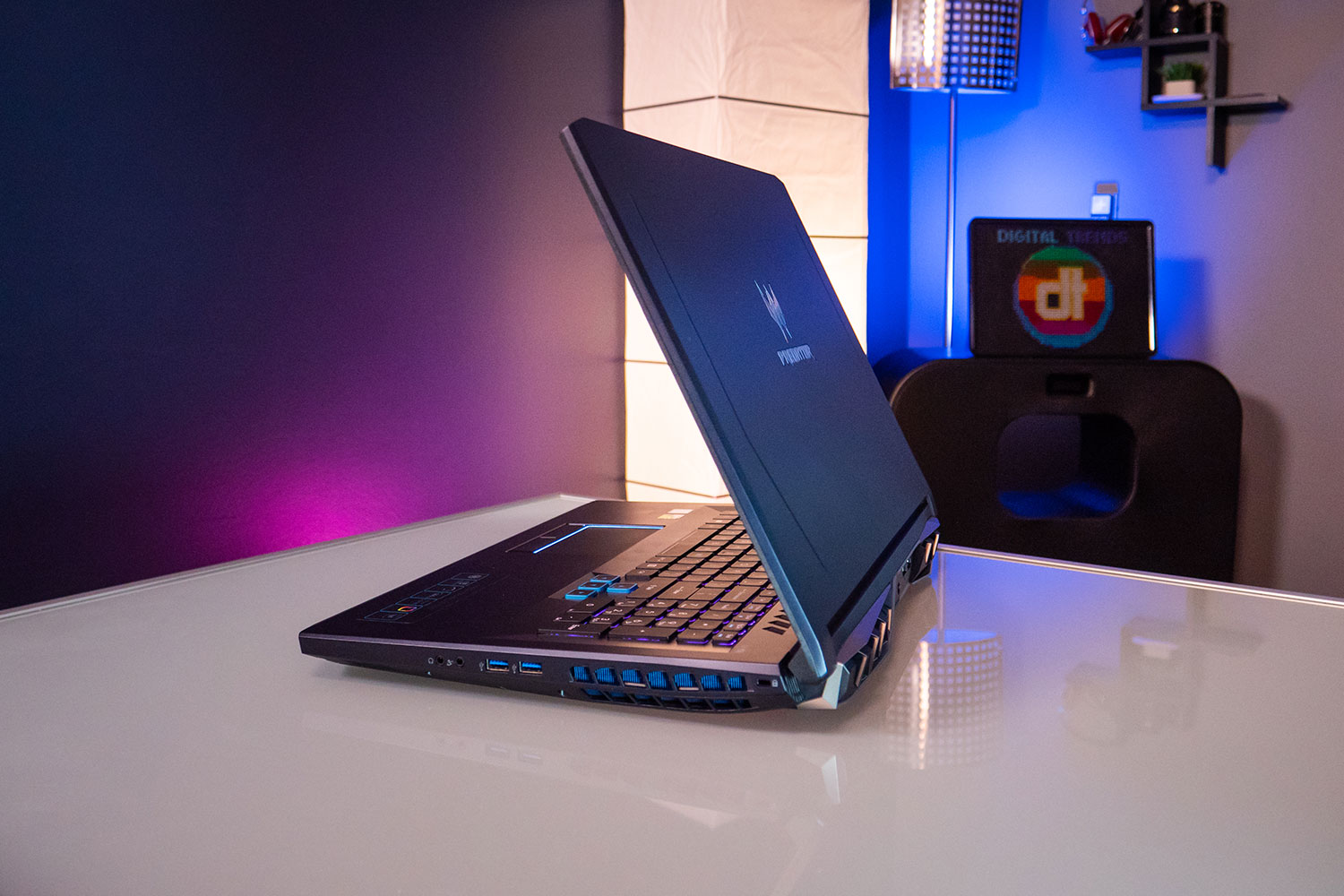
Picking a gaming laptop is a more intense decision than picking a desktop or individual components. You can’t just throw in a new graphics card or CPU in a few years to improve performance. Outside of RAM and storage, what you pick now will be what you game for years to come.
To that end, we’ve pitted two gaming laptops we very much like: The Acer Predator Helios 500 and the Alienware 17 R5. Both are serious gaming laptops with impressive performance, but only one can be your next gaming laptop. Here’s how they stack up.
Design

Unlike some streamlined gaming laptops like the Razer Blade, both the Predator Helios 500 and Alienware 17 R5 are very much typical gaming laptops. They’re big, heavy, and have that military, metallic styling that is so common in gamer-aimed products. The Helios 500 does come in a little lighter at 8.8 pounds (versus the 17 R5’s 10 pounds), though neither is going to be something you’ll want to play with on your lap. We do like the boxier look of the Alienware from a purely aesthetic standpoint though.
The Alienware machine has a lot of ports filling its flanks, with two USB-A and a single USB-C connector alongside an Ethernet port, headphone jack, Thunderbolt port, HDMI port, and mini-DisplayPort. That offers lots of options for running larger, external displays, with many of those ports located on the back, so they’re well out of the way when you’re gaming on a desk. In comparison, the Helios 500 has more USB ports, with three USB-A and two USB-C. It also has HDMI and DisplayPort connectors, as well as an ethernet connector, and a headphone jack. There’s a little more versatility there, especially when it comes to external USB accessories, but there’s not a huge difference between the two.
The keyboard on the Helios is fantastic and has been for a few generations, though it does not feature per-key backlighting like the Alienware system does. That platform also comes with its own Tobii eye-tracker, which is a nice touch, but it has limited usage in most games at this time.
Performance

There are only a couple of options for configuring the Acer Helios 500, but both are monstrously powerful. For $2,000 you can have an eighth-generation Intel Core i7-8750H CPU paired up with 16GB of memory (with space for up to 64GB), a GTX 1070 graphics chip, 256GB of PCIExpress SSD storage, and a 1TB hard drive. Microcenter even has that configuration at $300 off at the time of writing. If you want more for (more of) your money, you can spend $2,500 for the same configuration but with a Core i9-8950HK CPU and 512GB of SSD storage instead.
The Alienware 17 R5 has a similar hardware selection, but a broader price range. Starting at $1,500
A big part of that configuration and its cost though is the 4K display it comes with. There are options for a 1080p and 1440p panel in the price range, while the Helios 500 is limited to a 1080p display, but it is 144Hz — compared with the 120Hz refresh rate of the Alienware laptop at 1440p. Although the Acer laptop is a lower resolution, we found its visuals to be stunning in comparison to the Alienware alternative, and that’s thanks to its use of an IPS rather than a TN panel. Its color accuracy is noticeably better, and its contrast ratio is greater for deeper blacks and whites.
While the Helios 500 might be the slightly weaker system in terms of overall hardware, the end result simply looks better thanks to the higher quality, faster panel, even with a lower resolution. For 1080p gaming, the Helios 500 is more than enough power than what most gamers will need. However, if you plan on hooking up to high-resolution monitor, the Alienware 17 R5 will certainly produce better framerates.
Portability

Neither of these systems is one you’ll want to lug around all day, but that’s to be expected. The 17-inch form factor is not designed with portability in mind. Still, at 8.8 pounds, the Predator Helios 500 is noticeably lighter than the Alienware counterpart and will strain your back less during transit. The Helios is a little thicker, but shallower than its Alienware counterpart, measuring 16.85 x 11.73 x 1.52-inches, versus the 17 R5’s 16.7 x 13.1 x 1.18-inches.
The size differences between the two aren’t large enough to make them a deciding factor and battery life doesn’t do much to change that either. The heftier hardware in the Alienware laptop meant that it drained its battery faster in our video viewing test, lasting just under four hours, while the Helios 500 managed five and a half hours. However, the 17 R5 did last two and a half hours in our Basemark test, while the Helios 500 only offered an hour and a half of battery life.
Neither laptop is portable in any sense of the word and though in certain settings each has a battery life advantage, we would expect the slightly lower spec Helios 500 to outlast the Alienware system in most scenarios if the latter sports a 4K display.
Fast gaming trumps power

Both the Alienware 17 R5 and Acer Predator Helios 500 are fantastic gaming laptops. They’re supremely powerful, beautiful to look at and play on, and unsurprisingly, don’t last long when away from a power socket and comfortable desk. Picking one over the other is hard, but the Helios 500 will be better bang for your buck for most people.
While it might lack a UHD display, its 144Hz, 1080p IPS panel is prettier and smoother than the Alienware alternative. The Dell-built system might be more powerful if you opt for the higher specification version, but it’s also a lot more expensive too. When you’re paying as much as an extra thousand dollars for a screen that doesn’t look as good in games, it’s hard to argue it’s not wasted money.
Acer’s Predator Helios 500 gives you exactly what you need for high-speed, 1080p gaming and keeps the extras to a minimum to remain cost-effective. The Alienware system, in comparison, feels bloated for its task, as much as it’s great at completing it.



